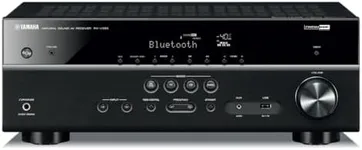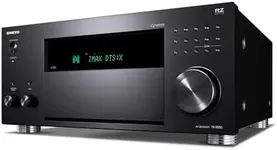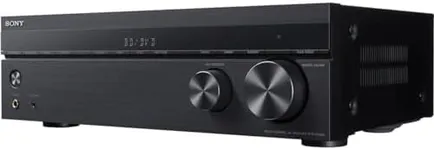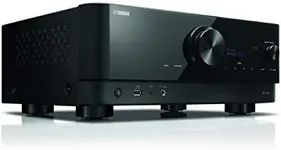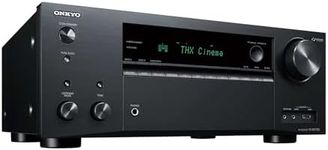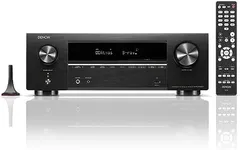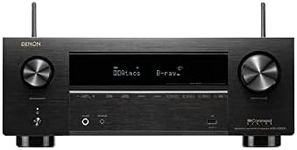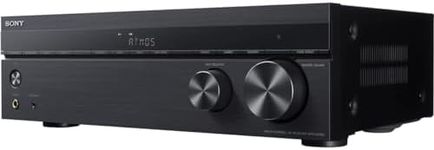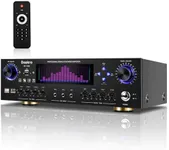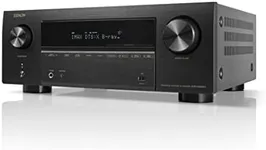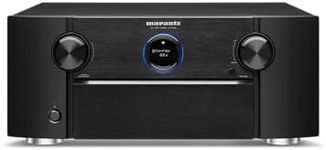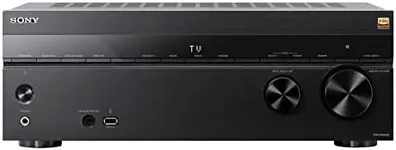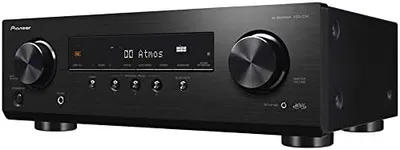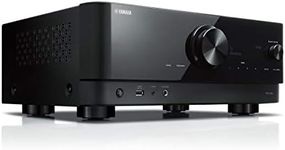Buying Guide for the Best 4 K Receivers
When choosing a 4K receiver, it's important to understand the key specifications that will impact your viewing and listening experience. A 4K receiver is a central hub for your home theater system, managing audio and video signals from various sources and delivering them to your TV and speakers. To ensure you get the best fit for your needs, consider the following key specifications and how they align with your preferences and setup.ChannelsChannels refer to the number of separate audio signals the receiver can process and output. This is important because it determines the complexity and richness of your audio setup. Common configurations include 5.1, 7.1, and 9.2 channels. A 5.1 system has five speakers and one subwoofer, suitable for smaller rooms or basic setups. A 7.1 system adds two additional speakers for a more immersive experience, ideal for medium-sized rooms. A 9.2 system includes nine speakers and two subwoofers, providing the most comprehensive sound experience for larger rooms or dedicated home theaters. Choose the number of channels based on the size of your room and your desired audio experience.
Power OutputPower output, measured in watts per channel, indicates how much power the receiver can deliver to each speaker. This is crucial for determining the loudness and clarity of the sound. Lower power output (50-80 watts per channel) is sufficient for small to medium-sized rooms and less demanding audio setups. Higher power output (100-150 watts per channel) is better for larger rooms or if you prefer louder, more dynamic sound. Consider the size of your room and your listening habits when choosing the appropriate power output.
HDMI Inputs and OutputsHDMI inputs and outputs are the ports through which you connect your various devices, such as gaming consoles, Blu-ray players, and streaming devices, to the receiver. This is important for ensuring you can connect all your devices without constantly swapping cables. A receiver with 4-6 HDMI inputs is typically sufficient for most users, allowing you to connect multiple devices simultaneously. If you have a more complex setup with many devices, look for a receiver with 7 or more HDMI inputs. Ensure the receiver also has at least one HDMI output to connect to your TV.
Audio FormatsAudio formats refer to the types of audio signals the receiver can decode and process. This is important for ensuring compatibility with various content and achieving the best sound quality. Common formats include Dolby Digital, DTS, Dolby Atmos, and DTS:X. Dolby Digital and DTS are standard formats for most content, providing good sound quality. Dolby Atmos and DTS:X offer more advanced, immersive audio experiences with height channels, ideal for a more cinematic experience. Choose a receiver that supports the audio formats you frequently use or plan to use in the future.
Video UpscalingVideo upscaling is the receiver's ability to enhance lower-resolution video signals to near-4K quality. This is important for improving the picture quality of non-4K content, making it look better on your 4K TV. Basic receivers may not offer upscaling, while mid-range and high-end models typically include this feature. If you watch a lot of non-4K content, such as older DVDs or standard-definition broadcasts, a receiver with good upscaling capabilities can significantly enhance your viewing experience.
Connectivity OptionsConnectivity options refer to the various ways you can connect your devices to the receiver, including wireless options like Bluetooth and Wi-Fi. This is important for flexibility and convenience in setting up and using your home theater system. Bluetooth allows for easy streaming from smartphones and tablets, while Wi-Fi enables integration with smart home systems and streaming services. Look for a receiver with the connectivity options that match your usage habits and the devices you plan to connect.
Room CalibrationRoom calibration is a feature that automatically adjusts the audio settings of the receiver to match the acoustics of your room. This is important for achieving the best possible sound quality tailored to your specific environment. Basic receivers may offer manual adjustments, while more advanced models include automatic calibration systems like Audyssey or YPAO. If you want the best sound quality without spending a lot of time on manual adjustments, choose a receiver with an automatic room calibration feature.
